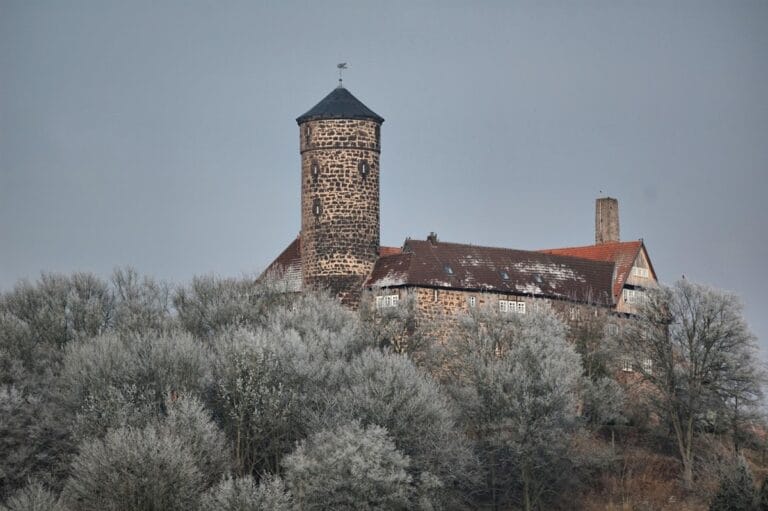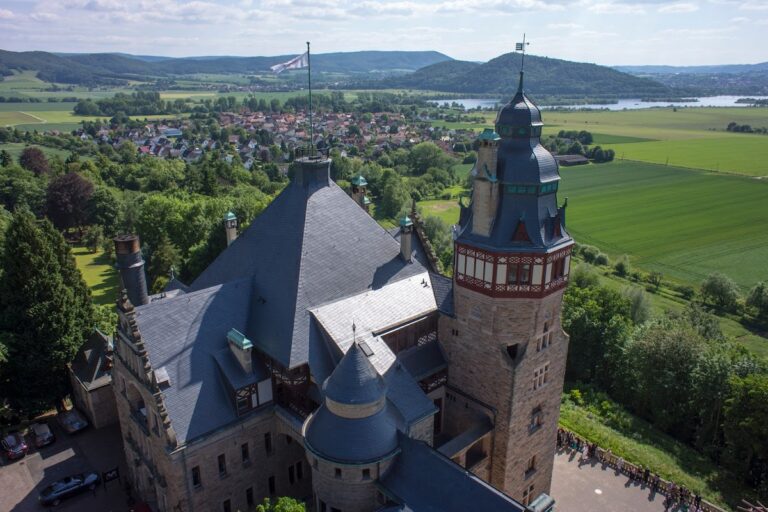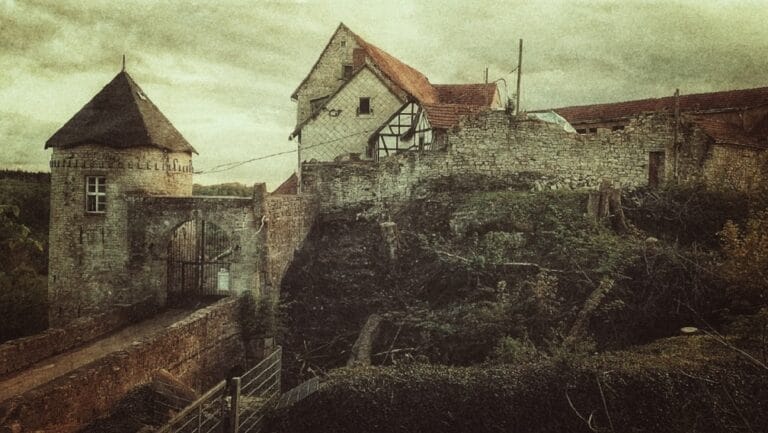Hanstein Castle: A Medieval Fortress in Bornhagen, Germany
Visitor Information
Google Rating: 4.6
Popularity: Medium
Google Maps: View on Google Maps
Official Website: www.burgruine-hanstein.de
Country: Germany
Civilization: Unclassified
Remains: Military
History
Hanstein Castle is a medieval fortress located within the municipality of Bornhagen in present-day Germany. It was constructed by the regional nobility during the High Middle Ages to secure control over the surrounding borderlands.
The earliest confirmed record of the castle dates to 1070 when it was destroyed amid the Saxon Wars by King Heinrich IV. At that time, it belonged to Count Otto von Northeim, indicating that the castle’s origins predate this event, likely established in the late 11th century or earlier. Following its destruction, Otto von Northeim is believed to have overseen its reconstruction, restoring its defensive role in the region.
Ownership of Hanstein Castle transitioned after 1144 from the Northeim family to the influential Welf dynasty. In 1209, control passed to Siegfried, the Archbishop of Mainz, through Otto IV, son of Henry the Lion. This shift reinforced the castle’s strategic function as a Mainz border fortress in the Eichsfeld region, an area often contested between territorial powers.
In 1308, Heinrich and Lippold von Hanstein initiated extensive rebuilding efforts with permission from the Archbishop of Mainz. Their work began with wooden structures and gradually advanced to stone fortifications, laying the foundation for the ruins visible today. The castle subsequently served as the hereditary residence of the von Hanstein family, who expanded their holdings across the 14th and 15th centuries, consolidating their regional authority.
The Thirty Years’ War in the 17th century brought partial destruction to the castle at the hands of Swedish forces, leading to its decline as a permanent residence. Despite abandonment, the von Hanstein family continued to use the site for gatherings, adding a knights’ hall between 1838 and 1840. The castle also functioned as a prison until the 18th century, reflecting its administrative utility beyond military purposes.
During the 20th century, Hanstein Castle’s northern tower was repurposed by East German border troops as a watchtower due to its vantage point near the inner-German border. Conservation efforts began in the mid-1980s, supported by local heritage groups, culminating in its transfer to municipal ownership in 1990. This marked a new phase focusing on preservation and cultural remembrance.
Remains
Hanstein Castle is situated atop a sandstone rock spur, approximately 390 meters above sea level, providing commanding views over several geological fault lines in the area. The fortress layout originally featured five distinct gates, which controlled passage from the outer courtyard, or bailey, into the inner section of the castle known as the core castle.
The surviving ruins prominently display Gothic architectural elements that have remained largely unchanged since the castle’s abandonment in the 16th century, allowing a clear view into medieval construction methods. One significant feature is the well located within the former castle kitchen, an essential component for sustaining occupants during sieges.
Within the inner ward of the castle stood a chapel, notable for containing a valuable altar installed in 1417 by Martin von Hanstein. This chapel was supported through endowments and served by the parish priest from the nearby village of Rimbach, highlighting the castle’s religious connections and its integration with surrounding communities.
Another important structure on the grounds was the prison, or kerker, which remained in use up to the 18th century. In the 19th century, the von Hanstein family constructed a new knights’ hall near the ruins, providing a venue for family meetings and ceremonies while preserving the site’s legacy.
The northern tower remains accessible today and functions as a vantage point offering panoramic views of the surrounding landscapes, including the Hoher Meißner, Kaufunger Wald, Leinebergland, and Eichsfeld. On especially clear days, observers can see the Harz Mountains and the Brocken peak. This tower’s later use included service as a border observation post during the German Democratic Republic era.
In contrast, the southern tower is not open to the public and does not serve as a lookout point. The adjacent village of Rimbach historically supported the castle’s functioning personnel and possessed its own parish church. The earliest gate of the castle was situated within this village, which also held market rights and possibly had defensive works in place during earlier times.
Geologically, the castle rests on layers of colored sandstone known as Buntsandstein from the Solling Formation, with shell limestone—referred to as Muschelkalk—exposed on its eastern slopes. Below the castle, several small quarries are visible, which were likely exploited to provide building materials during the original construction phases.










